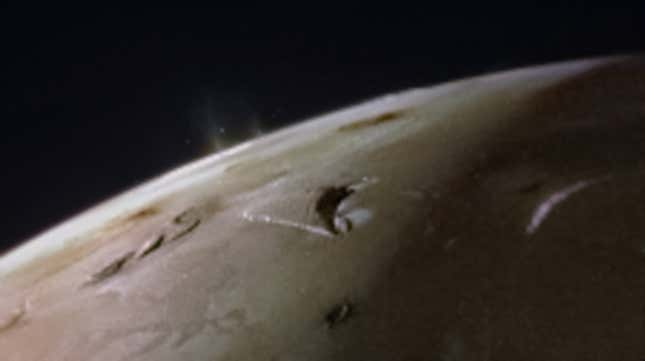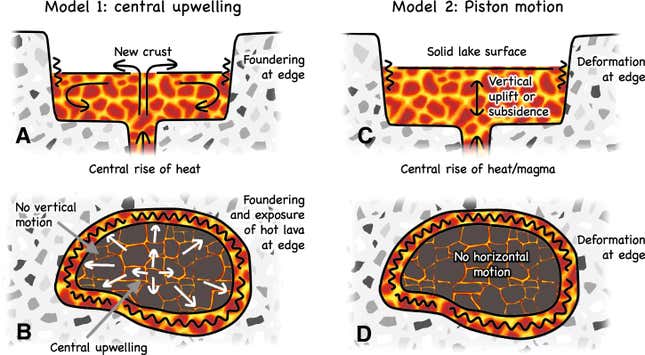
It’s not a big moon relative to some of its neighbors, but Jupiter’s Io is exceedingly active, with volcanoes by the hundreds spewing lava plumes dozens of miles above its surface, per NASA. Infrared tech aboard the space agency’s Juno probe mapped two such eruptions in February, returning valuable data on the mysterious happenings beneath Io’s surface. Researchers shared their insights on the matter in a paper published last week.
From around 2,400 miles away, the probe’s Jovian Infrared Auroral Mapper (JIRAM) instrument “revealed that the whole surface of Io is covered by lava lakes contained in caldera-like features,” explained Alessandro Mura, a Juno co-investigator from Rome’s National Institute for Astrophysics. On Earth, a caldera is a crater formed by a collapsing volcano. Io is about a quarter the size of Earth by diameter, and just a bit bigger than Earth’s moon.
“In the region of Io’s surface in which we have the most complete data, we estimate about 3% of it is covered by one of these molten lava lakes,” said Mura. Juno’s JIRAM tool came via Italy’s space agency, Agenzia Spaziale Italiana.

According to Mura, lead author of the Io paper, the probe’s flybys expose the most common type of volcanism on Jupiter’s hottest moon — “enormous lakes of lava where magma goes up and down.”
He added, “The lava crust is forced to break against the walls of the lake, forming the typical lava ring seen in Hawaiian lava lakes. The walls are likely hundreds of meters high, which explains why magma is generally not observed spilling out.”
Researchers are still poring over the data collected by Juno’s Io flybys, which occurred in February 2024 and December 2023.




















+ There are no comments
Add yours